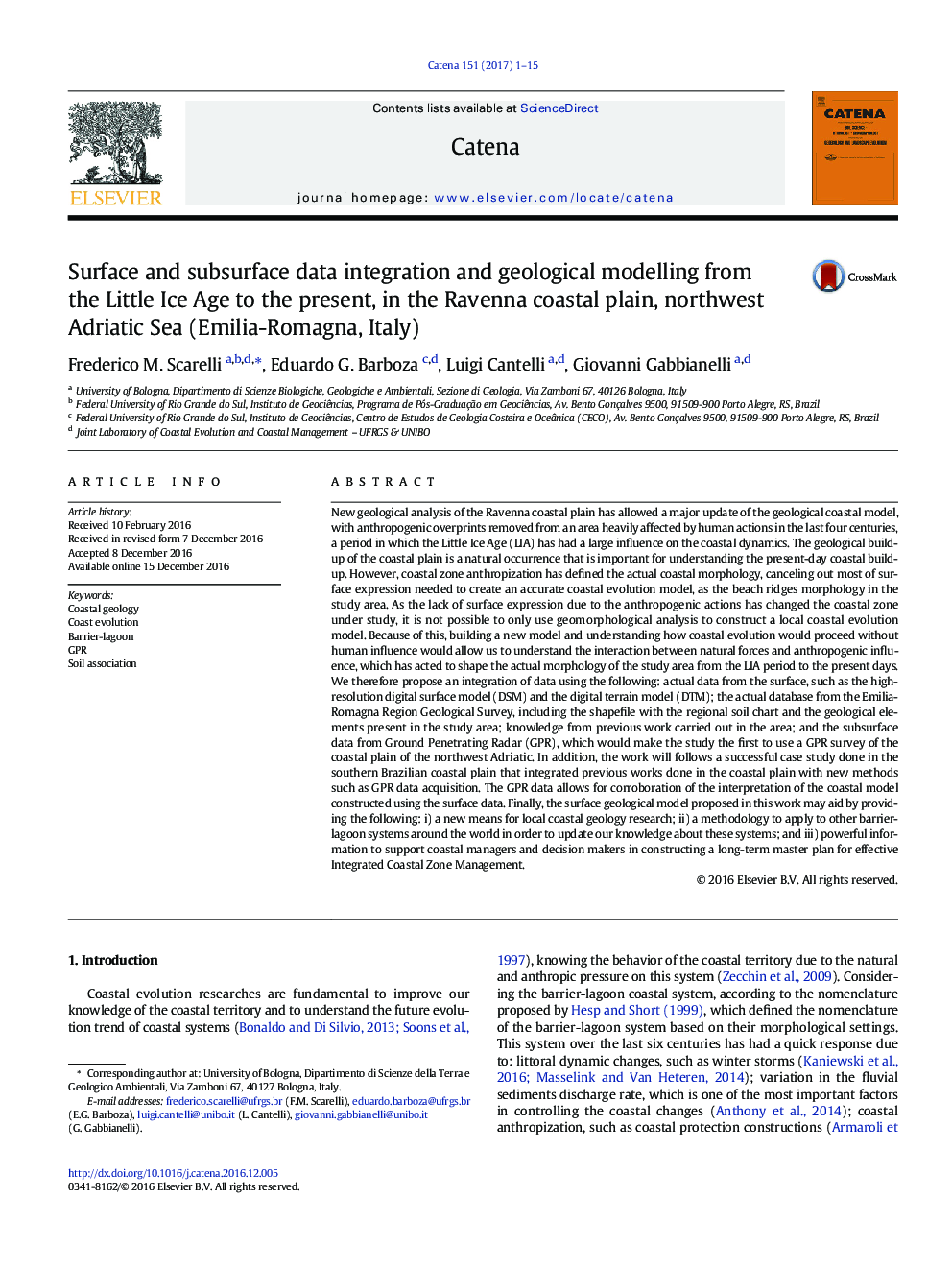| Article ID | Journal | Published Year | Pages | File Type |
|---|---|---|---|---|
| 5770168 | CATENA | 2017 | 15 Pages |
â¢Multi-disciplinary approach to build a high-resolution coastal evolution model.â¢Integrations of the surface and subsurface data to increase the model resolution.â¢Identification of the coastal territory changes using different data source.â¢Identification of two sand barriers shaped after and before the Little Ice Age.
New geological analysis of the Ravenna coastal plain has allowed a major update of the geological coastal model, with anthropogenic overprints removed from an area heavily affected by human actions in the last four centuries, a period in which the Little Ice Age (LIA) has had a large influence on the coastal dynamics. The geological build-up of the coastal plain is a natural occurrence that is important for understanding the present-day coastal buildup. However, coastal zone anthropization has defined the actual coastal morphology, canceling out most of surface expression needed to create an accurate coastal evolution model, as the beach ridges morphology in the study area. As the lack of surface expression due to the anthropogenic actions has changed the coastal zone under study, it is not possible to only use geomorphological analysis to construct a local coastal evolution model. Because of this, building a new model and understanding how coastal evolution would proceed without human influence would allow us to understand the interaction between natural forces and anthropogenic influence, which has acted to shape the actual morphology of the study area from the LIA period to the present days. We therefore propose an integration of data using the following: actual data from the surface, such as the high-resolution digital surface model (DSM) and the digital terrain model (DTM); the actual database from the Emilia-Romagna Region Geological Survey, including the shapefile with the regional soil chart and the geological elements present in the study area; knowledge from previous work carried out in the area; and the subsurface data from Ground Penetrating Radar (GPR), which would make the study the first to use a GPR survey of the coastal plain of the northwest Adriatic. In addition, the work will follows a successful case study done in the southern Brazilian coastal plain that integrated previous works done in the coastal plain with new methods such as GPR data acquisition. The GPR data allows for corroboration of the interpretation of the coastal model constructed using the surface data. Finally, the surface geological model proposed in this work may aid by providing the following: i) a new means for local coastal geology research; ii) a methodology to apply to other barrier-lagoon systems around the world in order to update our knowledge about these systems; and iii) powerful information to support coastal managers and decision makers in constructing a long-term master plan for effective Integrated Coastal Zone Management.
